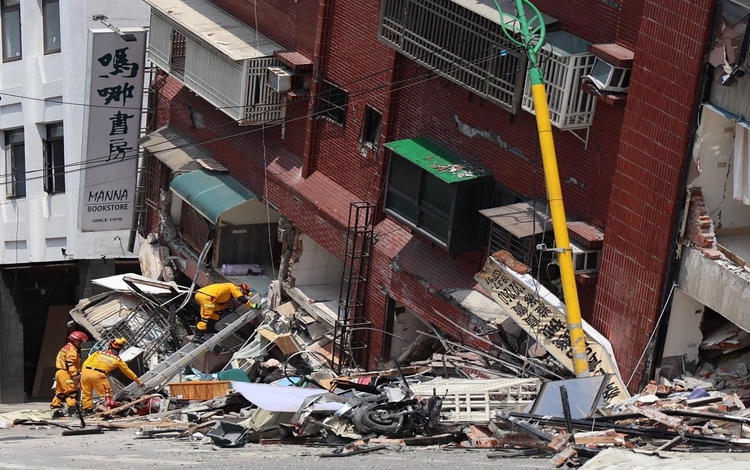Taiwan was struck by two earthquakes on Saturday, April 27, adding to the recent seismic activity in the region. The Central Weather Administration of Taiwan reported that the first earthquake, measuring a magnitude of 6.1, occurred at 2:21 a.m., followed by a second quake registering a 5.8 magnitude at 2:49 a.m.

This series of seismic events comes shortly after Taiwan’s most significant earthquake in over 25 years, which occurred on April 3, 2024. That devastating quake, with a magnitude of 7.2, resulted in nine fatalities and left over 900 people injured. Additionally, 50 individuals, who were en route to a hotel in a national park, remain missing.
The impact of these earthquakes has been particularly felt in Hualien, a mountainous and sparsely populated county near the epicenter of the April 3 quake. Reports indicate that several buildings in the area have tilted dangerously, posing a threat to residents and infrastructure. The seismic activity has also triggered massive landslides, further complicating the situation.
The recurrence of earthquakes in Taiwan underscores the region’s vulnerability to such natural disasters. Situated along the Pacific Ring of Fire, an area known for its seismic activity, Taiwan frequently experiences tremors and quakes. The country has implemented stringent building codes and disaster preparedness measures to mitigate the impact of earthquakes, but the recent events highlight the ongoing challenges faced by residents and authorities.
In response to the latest earthquakes, emergency response teams have been mobilized to assess damage, assist, and ensure the safety of affected communities. Authorities are urging residents to remain vigilant and follow safety protocols in the event of aftershocks or additional seismic activity.
These successive earthquakes serve as a sobering reminder of the unpredictable nature of natural disasters and the importance of proactive measures to enhance resilience and preparedness. As Taiwan continues to grapple with the aftermath of these seismic events, efforts to bolster infrastructure, improve early warning systems, and enhance disaster response capabilities remain paramount in safeguarding lives and property.
In the face of adversity, the resilience and solidarity of the Taiwanese people shine through as they come together to rebuild and recover from the impact of these earthquakes.
